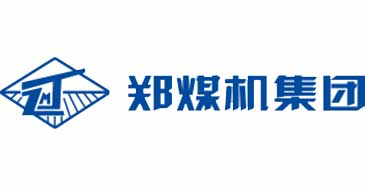Cooperation and technology of rubber sealing products
There are many kinds of sealing products, and the working conditions are different, such as heat resistance, oil resistance, chemical resistance, working state (static, dynamic, rotation and swing, etc.), speed, working pressure, etc. Therefore, rubber seals used for mechanical seals must first consider the requirements for use conditions or special conditions from the rubber, and then comprehensively consider reasonable formulas and processing techniques on the vulcanization promotion system, reinforcement filling system, softening system, and protection system. The rubber material generally used for mechanical sealing should have good elasticity and low compression permanent deformation to meet the special performance requirements of different product use conditions. As a dynamic seal, the rubber compound is also required to have certain tensile strength, good wear resistance, and tear resistance.
1. O-ring sealant
O-ring is a kind of sealing product with simple appearance structure, many specifications, and a huge number of needs. The sealing quality life of O-rings depends on the dimensional accuracy and the rubber compound. It is generally required that the compound has certain mechanical strength, tear resistance, good heat resistance, oil resistance, chemical resistance, and small compression permanent deformation under the conditions of use, which are its main indicators. According to the requirements of use, there are generally heat and oil resistance requirements, and the most used rubber compound is nitrile rubber. Acrylic rubber can be used for oil-resistant sealing products requiring higher temperature (such as 150 ~ C—90 ℃). Fluorine rubber for oil-resistant rubber products requiring higher temperature and silicone rubber for heat resistance. When the working pressure is high, the method of increasing the hardness of the O-ring compound is to increase the filling amount of carbon black, but the filling amount is too high, it is difficult to mix, and it damages the basic physical properties of the vulcanized rubber and also makes the rubber
The material is prone to scorch. In the case of using the same kind of rubber, such as nitrile rubber, in order to improve the heat and oil resistance and reduce the compression permanent deformation, peroxide (such as the use of DCP) vulcanization system or effective sulfur vulcanization system (low sulfur and high acceleration) . These two vulcanization systems can generate more carbon-carbon bond cross-linked structure and single sulfur bond cross-linked structure, effectively improve the heat resistance and oil resistance of the vulcanizate, and reduce the compression permanent deformation.
O-ring seals are filled with a heat-resistant and oil-resistant rubber compound in the reinforcement system, mostly using low-activity thermal cracking carbon black, spray carbon black or semi-reinforcing carbon black. These carbon blacks are characterized by coarse particles , Rubber compound has good elasticity, low heat generation, low compression permanent deformation, and can be filled in a large amount to reduce the cost of rubber compound. If the O-ring is used under dynamic sealing conditions, it needs to increase the tear resistance, and it can be used with some highly active high-wear carbon black. Fluorine rubber compound is self-reinforcing rubber. If it is filled with activated carbon black, it will reduce the mechanical properties of the compound. Therefore, it is generally filled with a small amount of thermal cracking carbon black or spray carbon black with coarse particles with low activity.
2. Oil seal compound
Oil seal is an important part of the medium seal of the transmission shaft. Its quality and life are directly related to the normal operation of the machine. Oil seals are generally used under dynamic working conditions and directly contact with the sealed medium such as oil, so the oil seal compound is required to have good oil resistance, wear resistance and a small friction coefficient. Because the friction between the oil seal and the shaft is very heat-generating, especially the lip area is higher, the heat-resistant aging of the rubber is better. In addition, it is required to have good flowability of the rubber compound to ensure easy movement and full filling of the mold cavity during mold vulcanization.
The main performance indexes of the oil seal are heat resistance and oil resistance. The commonly used rubber materials are nitrile rubber (long-term use temperature below 120 ~ C), acrylate rubber (120 ~ C-170 ℃), and fluororubber (170 ℃ -220oC). Under normal use, the oil leakage failure occurred at a later stage, mainly due to the aging and hardening of the lip of the oil seal, loss of elasticity and cracking. In order to increase the service life of the oil seal, the heat resistance of the rubber compound used for the oil seal must be improved. After the type of rubber is determined, the vulcanization system is the key. For example, nitrile rubber compound, using DCP peroxide vulcanization system and adding a vulcanization auxiliary agent (such as magnesium methacrylate) to improve heat resistance can effectively improve heat resistance.
For the filling reinforcement system, because the oil seal requires certain mechanical strength, tear resistance, and good wear resistance, high wear-resistant furnace black, quick extrusion carbon black, and general carbon black, semi-reinforced carbon are often used. Black, thermal cracked carbon black, sprayed carbon black, etc. are used together. White carbon black is also commonly used as a filler reinforcing agent, such as white carbon black alone, silane coupling agent can be added to improve the mechanical strength. Another advantage of white carbon black compound is its good adhesion to metal skeleton materials. For fluoroelastomer compounds, it is not suitable to use fine particle activated carbon black. Usually, coarse particle thermal cracking carbon black or spray carbon black is used. In order to increase the self-lubricity of the oil seal vulcanizate and reduce the friction coefficient, graphite powder, molybdenum disulfide and other filler materials are often added.
3. Rubber seal
Rubber seals are mainly used for automobiles, airplanes, railways, and high-rise buildings. It is a kind of rubber that prevents outside dust, air, water, etc. from entering the system. Rubber seals are mostly used for doors and windows of cars, trains, airplanes and high-rise buildings, so rubber materials are required to have good weather resistance, aging resistance and good mechanical properties, suitable elongation, compression permanent deformation and cold resistance performance. The processing performance, fluidity and extrusion performance of the rubber compound are better, the shape and size are stable, the surface is smooth, and there should be no impurities or marks on the surface. EPDM rubber is the best rubber compound for rubber seals, and it is also the main compound commonly used. It is characterized by good weather resistance. The reinforced filling system of the rubber seal rubber compound formula often uses carbon black varieties with good extrusion performance, small deformation, and smooth surface, such as quick extrusion carbon black (N550), or with general-purpose, semi-reinforced carbon black, spray carbon Black and so on. For high-end sealing products such as cars, the use of carbon black not only needs to meet the requirements of physical and mechanical properties, processing performance, and the surface must be smooth and free of particles, so the content of sieve residue of carbon black is required to be low, and there must be no impurities, that is, carbon black The purity is higher.
-
Excavator worry free offline service officially launched
-
Letone BMW exhibition in Germany
-
So warten Sie die Hydraulikleitung des Baggers
-
Ursachen von Gummisprayfrost in Kaltwetterprodukten
-
Causes of scorching of rubber compound and methods for preventing scorching of rubber compound
-
Card sleeve type pipe joint installation
-
Cooperation and technology of rubber sealing products

















